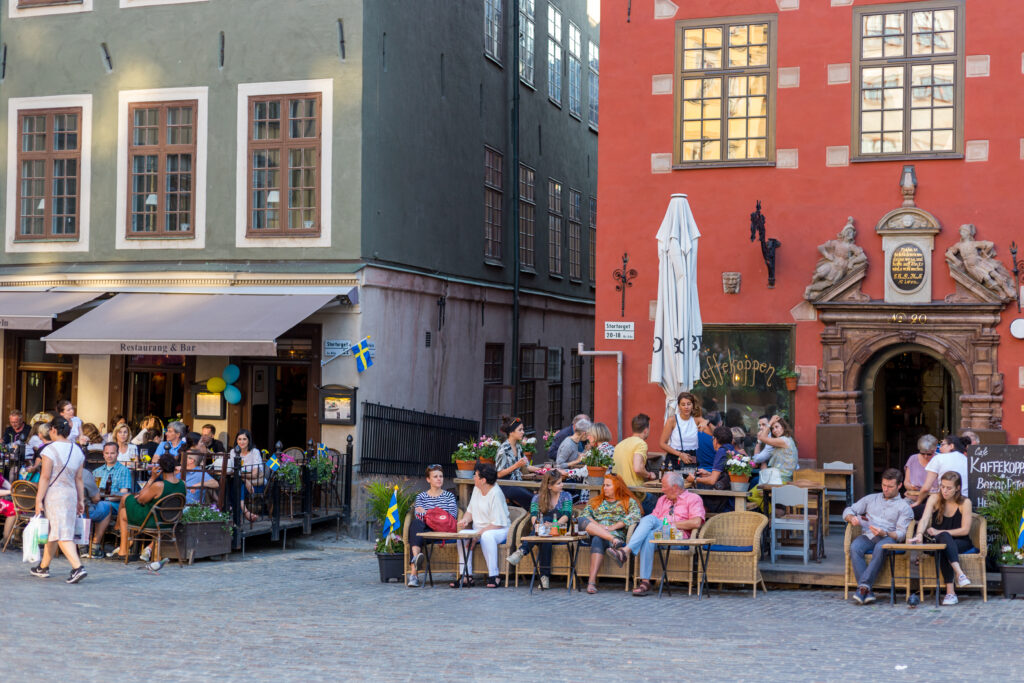Over 50% of people in Sweden open to trying cultivated meat – but awareness still low
A recent study conducted by YouGov on behalf of the Good Food Institute Europe reveals a promising inclination among Swedish consumers towards cultivated meat.
Artikeln finns även på svenska.
4 June 2024

A recent study conducted by YouGov on behalf of the Good Food Institute Europe reveals a promising inclination among Swedish consumers towards cultivated meat. In light of climate change and escalating food scarcity, cultivated meat emerges as a hopeful alternative to conventional meat production. Nevertheless, awareness about cultivated meat remains limited.
Over half of Swedes (55%) are open to trying cultivated meat – a way to produce meat by cultivating animal cells in a controlled environment rather than raising and slaughtering animals. This innovative approach offers a sustainable and ethical solution to meet the rising global demand for meat while mitigating environmental impact, addressing animal welfare concerns and improving food security.
Thomas Kalling, professor of strategic management at Lund University, who heads several research projects on how food businesses adapt to innovative ideas, underscores the significance of these findings.
He said: “Swedes are typically keen on new things, and it’s gratifying to see such a high level of awareness regarding cultivated meat. Furthermore, their balanced perspective underscores the potential for cultivated meat to not only enhance our competitive edge but also tackle pressing global challenges related to health, ecology, nutrition, and affordability.”
According to the study, a significant majority (57%) support making cultivated meat available for sale in the country if it is approved by regulators, while 60% support domestic production in Sweden to bolster the national economy.
However, despite this growing interest, the study highlights a substantial gap in knowledge about cultivated meat. While over half (55%) of respondents claim awareness of the concept, only 14% claim to know a lot about it.
“Cultivated meat can sit alongside the best farming practices to play a vital role in boosting food security and providing future-proof jobs. Sweden, with its appetite for innovation and long history of innovation, is well-placed to take advantage of this quickly growing global industry, and it’s great to see nearly two-thirds of Swedes appreciate the economic benefits this food can deliver,” said Elena Walden, senior policy manager at the Good Food Institute Europe.
How is cultivated meat made?
Cultivating meat is similar to growing plants from cuttings in a greenhouse, which provides warmth, fertile soil, water and nutrients. It involves taking a small sample of cells from an animal and growing them in a fermentor, similar to those used for brewing beer.
This supports the same process that happens inside an animal by providing the warmth and basic nutrients needed to produce meat – water, proteins, carbohydrates, fats, vitamins and minerals. The result is an abundance of meat, nutritionally identical to conventionally produced meat, but made in a more sustainable way.
Why do we need it?
Compared with conventional beef production, peer-reviewed research shows cultivated meat made using renewable energy could reduce climate emissions by up to 92% and reduce air pollution by up to 94%.
Because cultivated meat could use up to 90% less land, it can help satisfy demand within Europe’s borders, while creating the space farmers need to adopt extensive, organic and agroecological methods.
Europe’s regulatory process
Before a cultivated meat product can be sold in Europe, it needs to be approved by regulators in a process governed by the Novel Foods Regulation. Once EU regulators approve a cultivated meat product, it can be sold across all 27 EU countries.
The approval process will include a thorough and evidence-based assessment of the safety and nutritional value of cultivated meat and is estimated to take at least 18 months.
